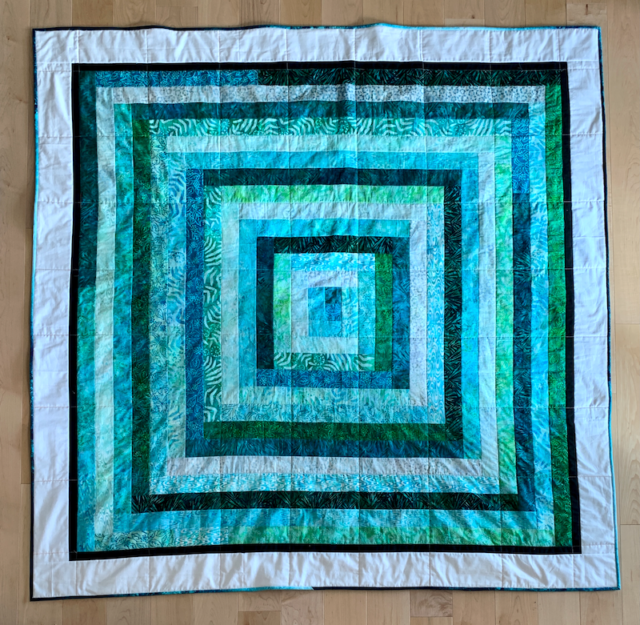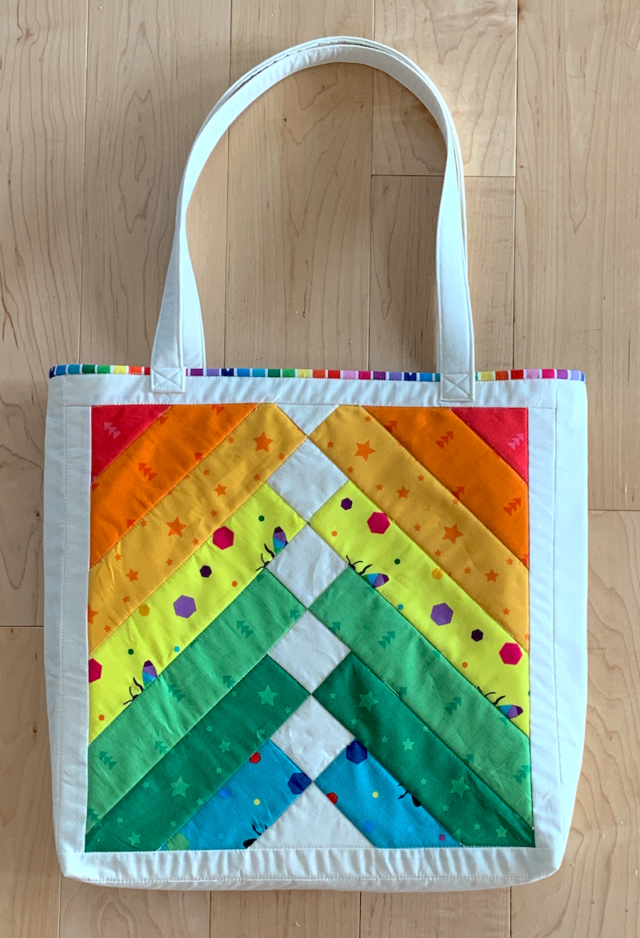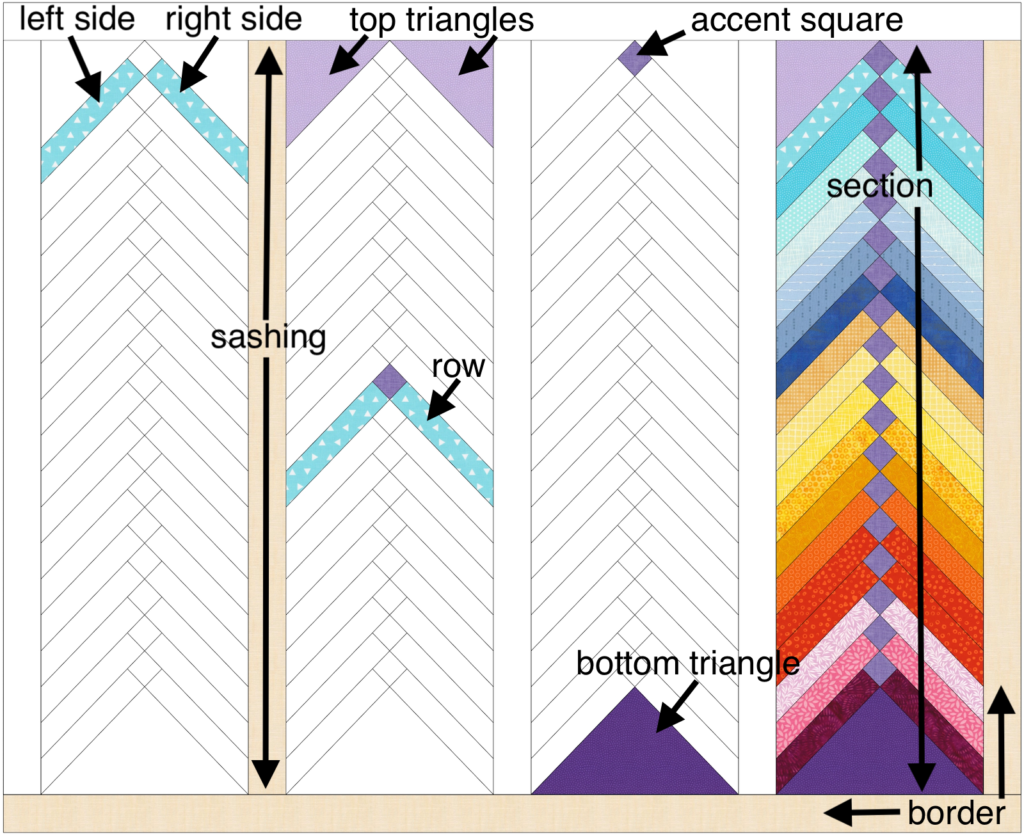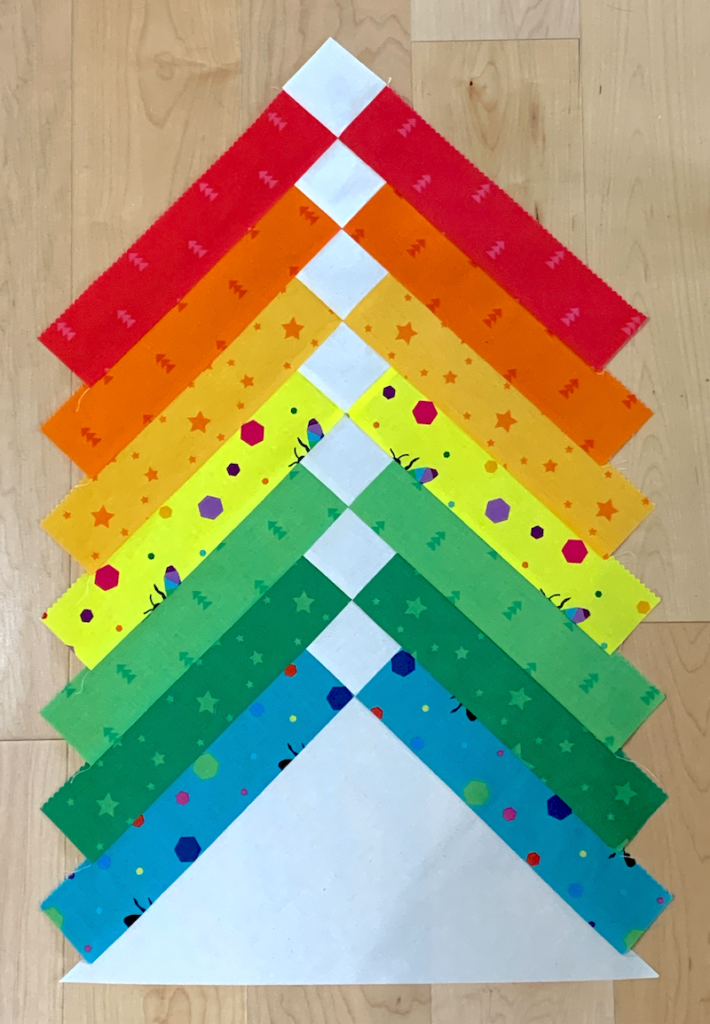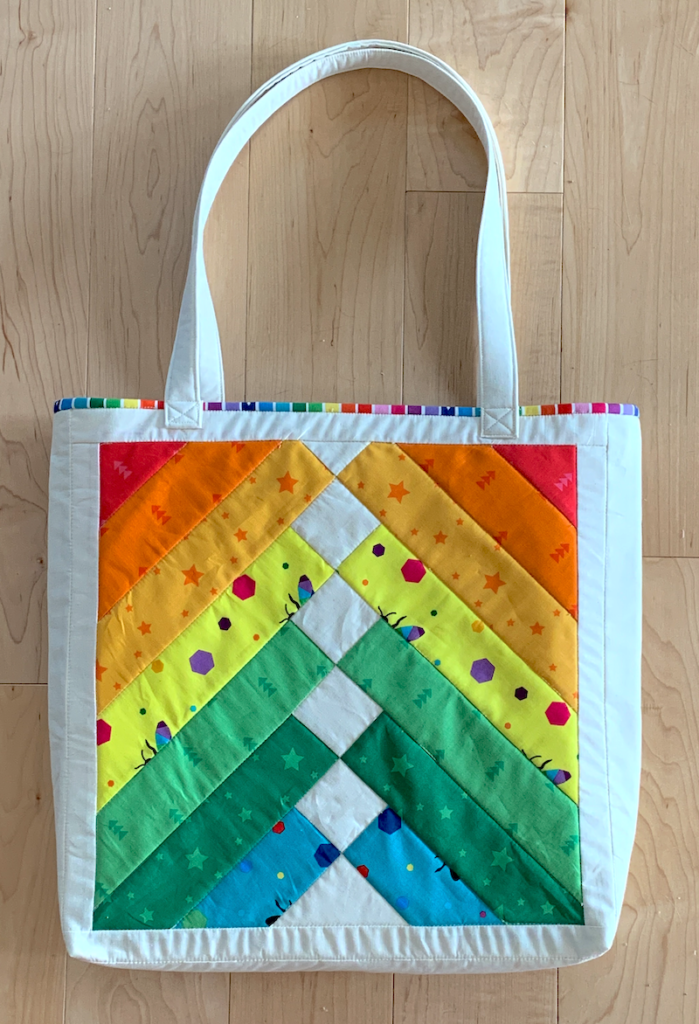Log Cabin Block Experiments
I’ve always enjoyed working with the Log Cabin block. It’s easy to make and you can create many different and interesting layouts with it. I had a few experiments I wanted to do.
Note: I updated the end of the post on 9/16/2021 to include a photo of the quilt with cornerstones.
Left or Right?
My first question for myself was, “Does it matter whether you add the strips to the left or to the right?” The answer is, it works both ways as long as you are consistent in the direction you choose. That is, if you pick adding your strips to the right, always add your strips to the right if you want the color layout to end up the way you intended.
Dark Strips Inside or Outside?
I wondered whether I would prefer the darker (or more vivid) color strips on the outside, which is what I see in most Log Cabin designs, or on the inside of the block. I like both of these, but I think I slightly prefer the one on the left.

Tote Bag
It took exactly 6 jelly roll strips to make the two blocks I made and they are the perfect size for a tote bag 🙂. These photos show the two sides of the tote. Here you can tell that I added strips in opposite directions, making a left hand block and a right hand block.

You could use the empty space in the center for:
- A fussy cut 4 inch square
- An appliqué
- A monogram or other embroidery
A full tutorial on how to construct the tote bag from the blocks you create is available at https://www.etsy.com/listing/1061546252/quilted-tote-bag-tutorial-pdf
Jelly Roll Log Cabin Quilt?
I wondered what it would look like if I took one whole jelly roll, started at the center, and worked my way out until the entire jelly roll was used. Would I like the results? Would it look like a mishmash?
Here is what I did:
- Laid the strips out in same-color sets of strips, in the order the strips came off the roll.
- Picking a starting color for the center.
- Changed colors, in order, each time I made a turn.
- When I got to the point that strips were too short to make the length of a side, I stitched same color strips together.
- When I got to the point where there wasn’t enough of a color to make the length of a side, I stitched the strip together with the next color.
These are the strips I started out with (40 strips total, each 2-1/2 inches wide by 44 inches long):

These are the strips I ended up with at the end:

The giant log cabin block ended up 59 inches by 59 inches in size. I rather like the way it came out.

I wanted my quilt to be about 69 inches by 69 inches so I added a 1 inch and a 4 inch border all the way around.

My daughter really likes this quilt and I happened to buy two of this jelly roll so I will be making one for her too. For hers, I plan to add a magenta square to the beginning of each new strip I make. Should be interesting!
Update 9/16/2021: Here is the quilt I made for my daughter with cornerstones. I like it!

